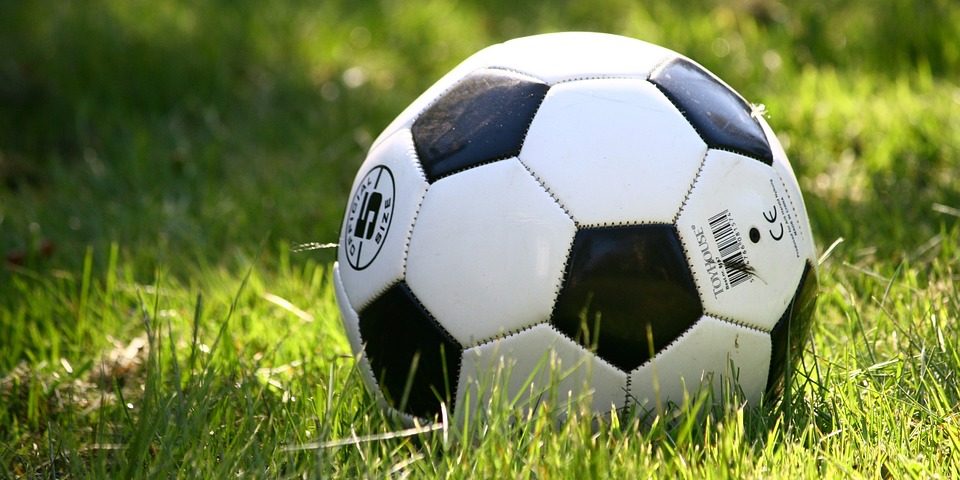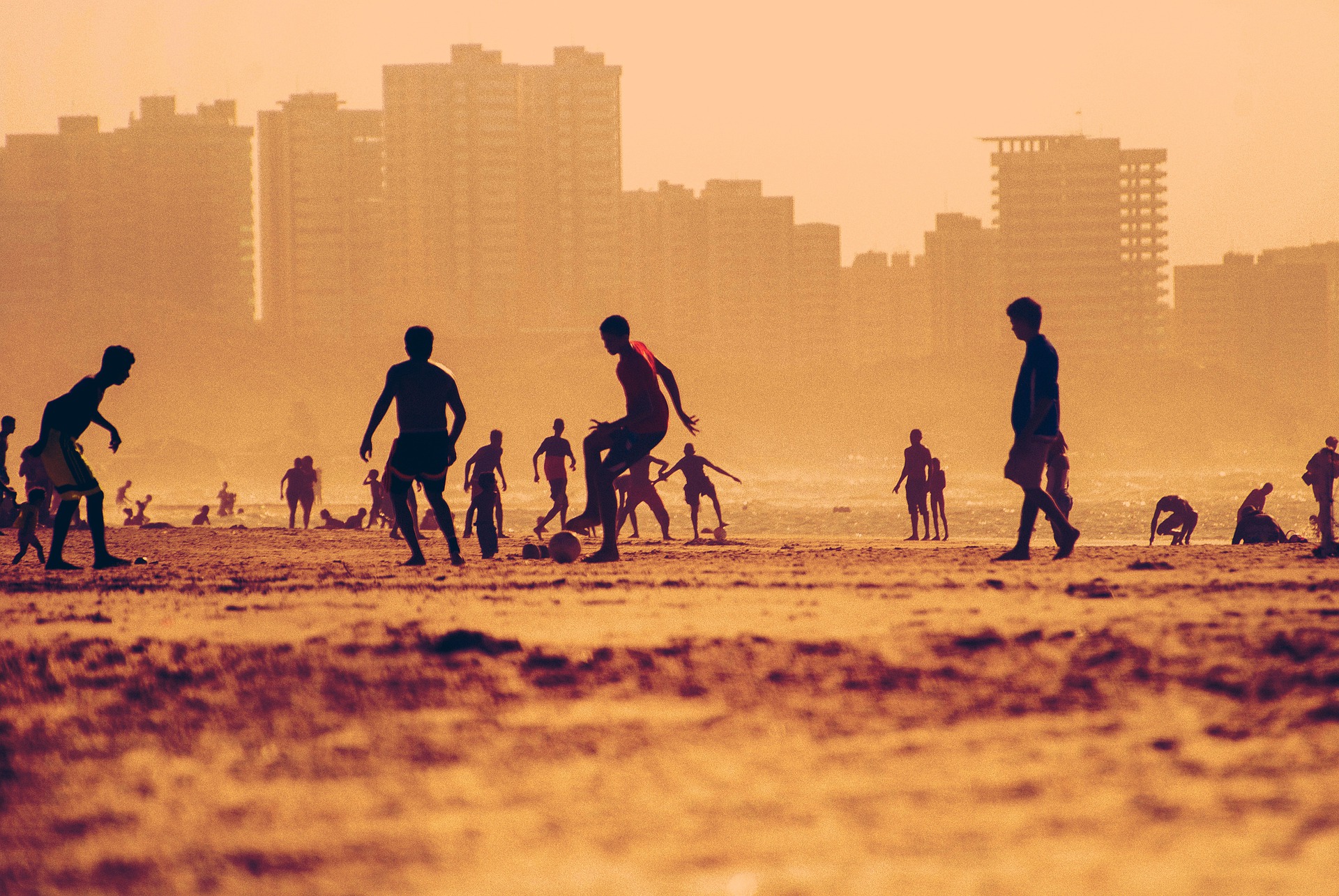What is a DM in soccer?


Table of Contents
What is a DM in soccer? Soccer is changing, and with it, comes new playing strategies. One of these is the use of a Defensive Midfielder, or DM. They’re an important part of defensive and offensive moves. Cutting passing lanes, winning balls, and intercepting attacks are just some of their key roles.
Plus, a great DM can control midfield play by creating passes and organizing movement for counterattacks. In modern football, the need for a DM is huge – they link defenders and attackers, and anchor their team’s midfield.
What is a DM in soccer?
Didier Deschamps is known for perfecting the DM style in English football in 1993. He played for Chelsea F.C under Glenn Hoddle and was one of the best defensive midfielders ever seen there.
What is a DM in Soccer?
To understand the role of a DM in soccer, you need to know the definition of DM in soccer and the role it plays in the game. This section will introduce you to these sub-sections, giving you the complete solution to your queries on what a DM in soccer is and its essential role in the game.
Definition of DM in Soccer
A DM is a defensive midfielder in soccer. They are crucial, pushing the team forward and protecting the backline. They’re also called “registas” – Italian for directors. This reflects their role in dictating the pace and style of play.
A good DM has excellent ball control, tactical awareness, and physical stamina. Some DMs are more attacking-focused, while others focus on defense.
The DM position only emerged in the 1960s, when teams began experimenting with formations beyond the traditional 2-3-5 lineup. It is now essential in any well-rounded squad. Without a strong DM, midfield can lack balance and leave gaps for other teams to exploit.
Why be just a midfielder? Be a destroyer instead. That’s the role of a DM in soccer.
Role of DM in Soccer
DM is the central midfield role in soccer. It’s key for defense and attack. This includes intercepting passes, tackling opponents, breaking up plays, and dictating the tempo. Plus, it provides cover to the backline while aiding the offense. DM is the defender of the attacking third – their control over areas will affect team performance.
Communication is vital for DM. It builds a strong defense, stops gaps, and coordinates all players. Athletic prowess is important too. High endurance and passing ability are musts. Smart reading of oppositional players’ movements is also needed. This helps to position DN players for vital interceptions and play disruption.
Pro Tip: Interception techniques are essential for being a successful defensive midfielder. Stay in your area – don’t be dragged out of position. Be the hero your team needs – learn to play DM in Soccer!
How to play as a DM in Soccer?
To play as a DM in soccer, it’s crucial to have the right set of skills and physical attributes. Mastering these traits can help you become an effective defender and help your team win games. In this section on “How to play as a DM in Soccer?”, we will cover the skills required to play as a DM in soccer and the physical attributes necessary to excel in this position.
Skills required to play as a DM in Soccer
Playing defense in soccer requires special talents. Here’s what a Defensive Midfielder (DM) needs to have:
- Tactical Decision Making – To read their opponent’s moves and intercept passes and tackles.
- Defensive Skills – To be good at solo defending, tackling, intercepting, and blocking.
- Physical Prowess – Stamina and strength to dominate on the field.
- Vision – Good vision and passing ability to assist attackers and keep possession.
A DM must also know how to adjust their formations to get the most out of their skills without disrupting the team.
Sergio Busquets, one of the world’s most influential midfielders, helped FC Barcelona win La Liga and other top titles. While strong abs won’t help on the pitch, having a clear head and powerful lungs will.
Physical attributes required to play as a DM in Soccer
Playing as a defensive midfielder in soccer requires special physical abilities. These include more than strength and speed; mental toughness and tactical awareness are also essential.
To be successful, a DM must have:
- 1. Great stamina to cover both attack and defense.
- 2. Balance and coordination for tackling and intercepting.
- 3. Height and jumping ability for aerial battles.
The role also needs good communication skills and discipline to execute team strategy. Fascinatingly, different soccer positions require various athletic attributes. BBC Sport stats show outfield players run 10-13 kilometers per game. DMs may not get the glory of scoring goals, yet they masterfully control the game from the back.
DM vs other Positions in Soccer
To understand the differences between DM and other positions in soccer, like CM and CB, we need to analyze their unique traits. This will help you make informed decisions while choosing your soccer position or while formulating soccer team strategies. Let’s discuss the notable distinctions between DM and CM in soccer, and the difference between DM and CB in soccer.
Difference between DM and CM in Soccer
In soccer, the differences between Defensive Midfielder (DM) and Central Midfielder (CM) are key. It’s vital to comprehend these distinctions for player progress and selection.
A table illustrates some facts that distinguish a DM from a CM. In addition, as soccer advances, so do the expectations of each role.
| Difference | Defensive Midfielder | Central Midfielder |
|---|---|---|
| Responsibility | Defense | Offense |
| Playing Style | Physical and Tough Tackling | Possession-based and Creative |
| Skills | Positioning, Interception, Tackling, Stamina | Passing, Dribbling, Vision, Technique |
DMs have immense pressure. Although they’re not as glamorous as other positions, they supply vital help to win games by securing an invulnerable defense.
Claude Makelele is a noteworthy example of remarkable defensive midfield ability. When playing for Chelsea and Real Madrid in their peak season, his role was essential for success. He was renowned for his flawless positioning and instant decisions during gameplay; thus, he’s one of the greatest defensive midfielders of all time.
DM and CM in soccer are like two sides of a coin: one defends and the other attacks, but both are necessary for a victorious team.
Difference between DM and CB in Soccer
Examining the differences between Defensive Midfield (DM) and Center Back (CB) takes a professional approach. A comparison table reveals that DM requires ball handling, attacking, and defensive skills, while CB mainly stays in defense, but may take corners and communicate more from the back.
Unique to both positions is DM’s need for stamina, and CB’s reliance on tackling and positioning. To better performance, these players should master their respective abilities by improving passing accuracy and reading qualities.
Exercises that focus on developing these traits, like workouts or targeted drills, can boost efficiency in ideas. DM’s may not get the spotlight, but they can be the real playmakers.
Famous DM’s in Soccer
To explore famous DM’s in soccer, dive into the techniques of Claude Makelele and Sergio Busquets. These two soccer players have made significant contributions to the Defensive Midfielder role, and it is worth delving into their techniques to learn more about the game.
Claude Makelele
Claude Makelele is renowned for his defensive prowess and ability to break down opposition attacks. He defined and perfected the “Makelele role” of a holding midfielder. His style revolutionized midfield play in football; influencing a generation, such as N’Golo Kante and Fernandinho.
He’s won many titles, including two La Liga and three UEFA Champions League trophies with Real Madrid. With Chelsea, he bagged two Premier League titles and one FA Cup. Makelele’s legacy left an indelible mark on modern football tactics. Teams now emphasize the importance of a holding midfielder who reads the game, wins tackles, covers teammates and distributes the ball well.
So, don’t miss out on celebrating the great Claude Makelele by exploring his career and innovative style of play. As well as Sergio Busquets, the master of the dark arts and the patron saint of tactical fouls.
Sergio Busquets
DMs (defensive midfielders) are at the heart of a team’s success. Sergio Busquets, a Spanish pro who plays for Barcelona, is renowned for his skill. He reads the game well and can transition swiftly from defence to attack. His mental strength makes him even more formidable.
Busquets demonstrates excellent tactical awareness and positioning. He makes smart decisions under pressure. To emulate him, coaches must nurture young players in the same way. They should hone their decision-making skills and develop mental resilience.
In conclusion, Busquets’ game sense and fortitude make him one of the best DMs in soccer. Future DMs must focus on these skills to replicate his success.
Conclusion and key takeaways
Some key points to remember when thinking about ‘What is a DM in soccer?’:
- A DM is a defensive midfielder – they need to both defend & attack.
- Famous DMs include Kante, Busquets, and Makelele.
- Their role varies with the team formation & strategy.
- DMs can also contribute to their team’s offense.
- Some teams use two or three DMs in certain situations.
Pro Tip: DMs need high stamina & great technical skills. This helps the team’s performance on the field.
What is a DM in soccer? – Frequently Asked Questions
Q: What does DM stand for in soccer?
A: DM stands for Defensive Midfielder.
Q: What is the role of a DM in soccer?
A: A DM’s main role is to protect the defense and act as a shield in front of the back line. They also focus on intercepting passes and making tackles to regain possession of the ball for their team.
Q: What are some examples of famous DMs in soccer?
A: Some famous DMs in soccer include Sergio Busquets, N’Golo Kante, Casemiro, Fernandinho, and Fabinho.
Q: Can a DM also be an offensive player?
A: While a DM’s primary role is defensive, they can also contribute to the team’s offensive play by distributing the ball and initiating attacks from the midfield.
Q: How is a DM different from a CM (Central Midfielder)?
A: While both play in the midfield, a DM focuses on defense and a CM focuses on both offense and defense. A DM is typically more defensive-minded and stays closer to the back line, while a CM has more freedom to move around the midfield and contribute to both attacking and defending.










